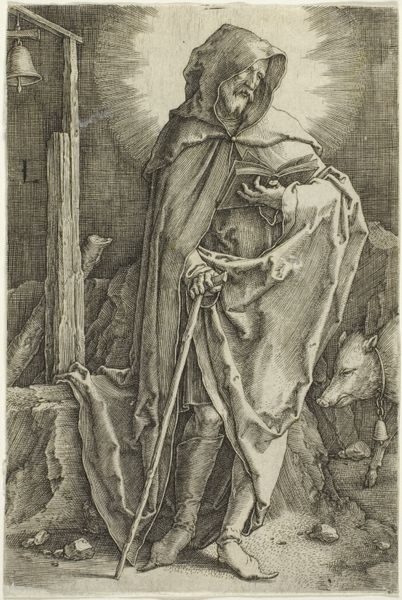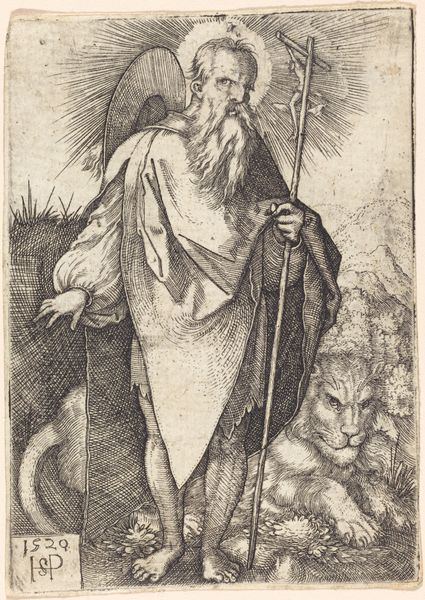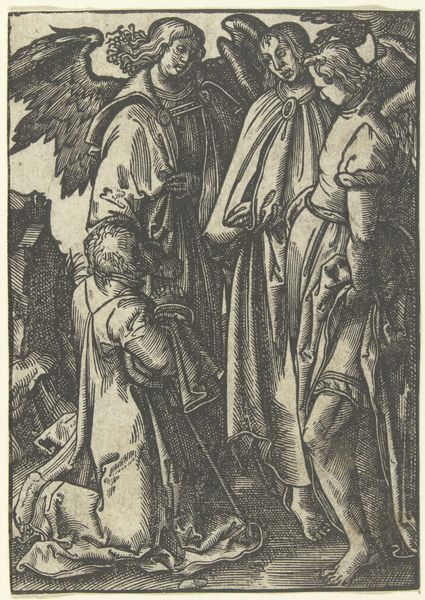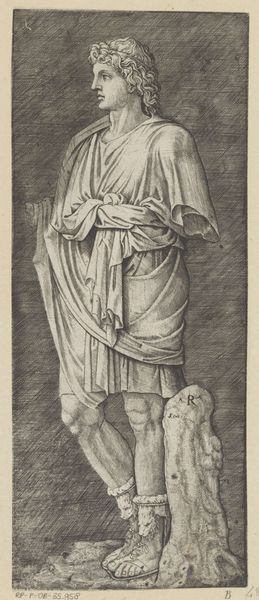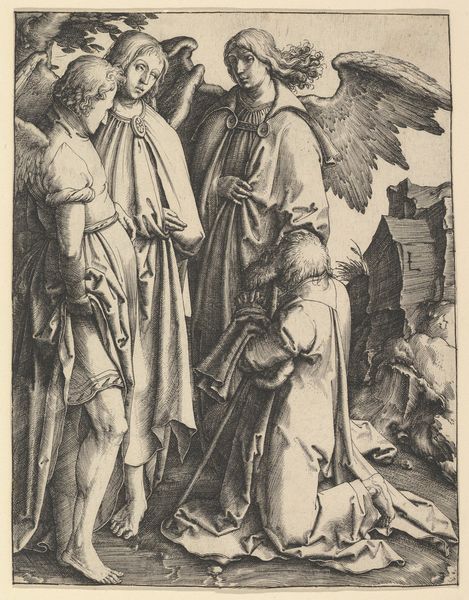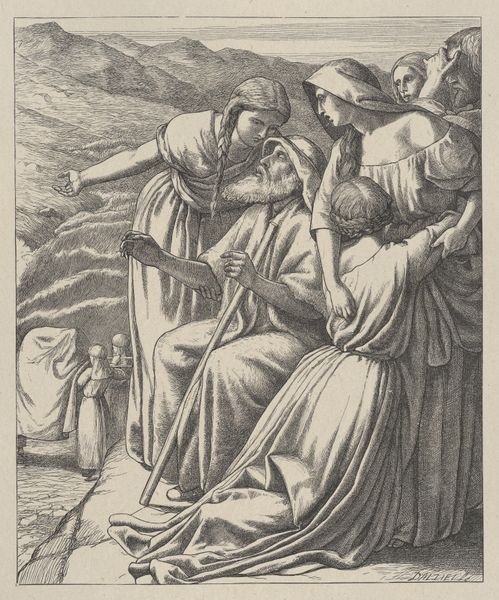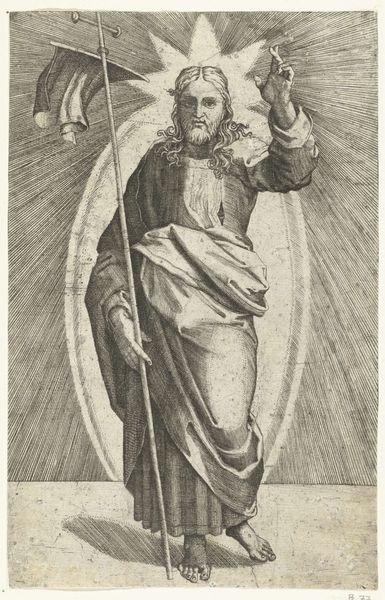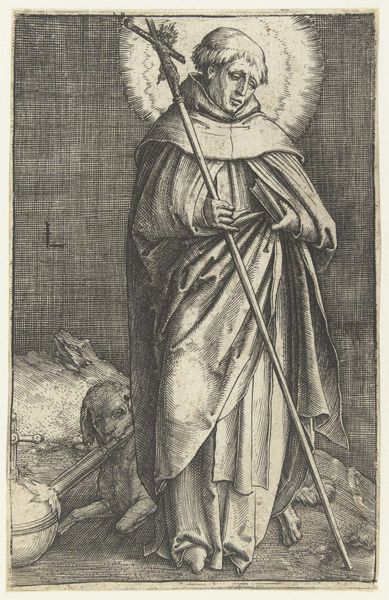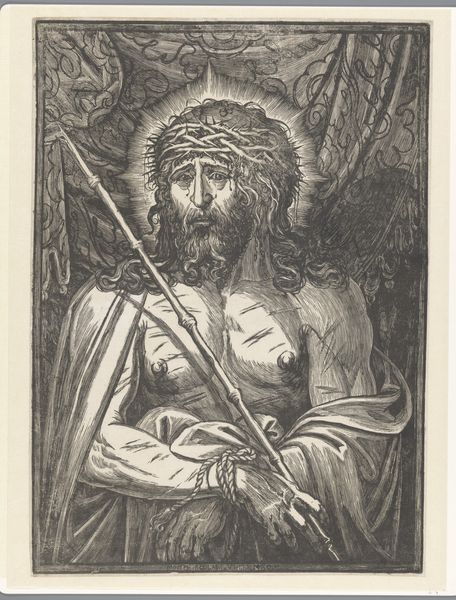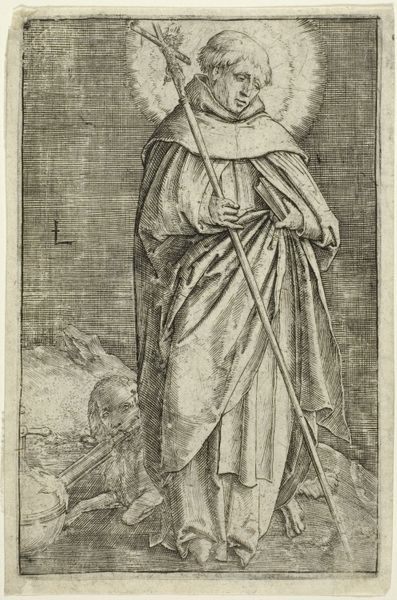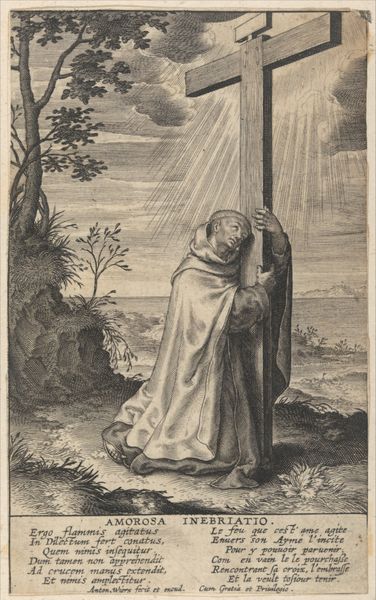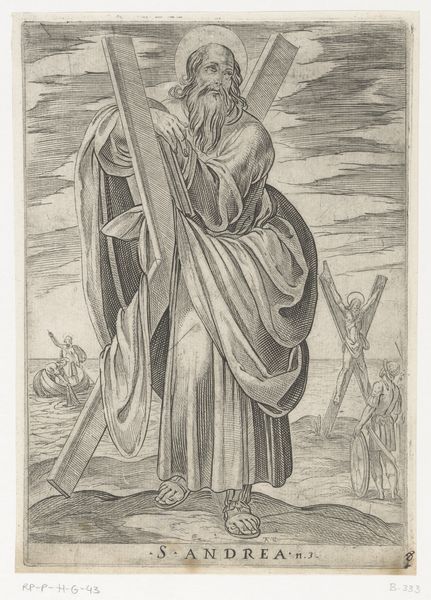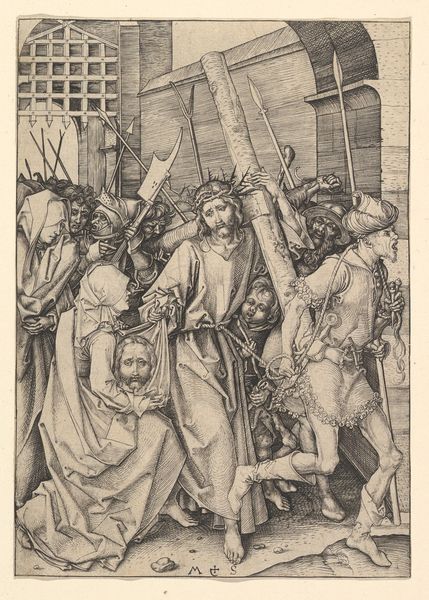
drawing, print, engraving
#
drawing
#
pen drawing
# print
#
figuration
#
history-painting
#
northern-renaissance
#
engraving
Dimensions: sheet: 4 1/2 x 2 15/16 in. (11.5 x 7.5 cm)
Copyright: Public Domain
Editor: We’re looking at Lucas van Leyden's "St. Anthony," made between 1516 and 1526. It's an engraving, and the level of detail is incredible. The textures of the robes, the landscape… It’s really quite captivating, even with its somber mood. What strikes you when you look at this piece? Curator: What immediately draws my attention is the labor invested in its production, considering the medium. Engravings like this were crucial to disseminating images widely. Look closely: the marks aren't just lines, they're evidence of craft. How do the tools and techniques used contribute to its meaning? The distribution of prints like these helped shape popular understanding and devotion. Editor: That's interesting, I hadn’t thought about the printing process like that before! It feels like it's both devotional, but also functional, if that makes sense. Curator: Precisely! This intersects the realms of fine art, popular culture, and devotional practice. Consider the role of workshops, materials, and even the market for these prints. Who consumed these images, and what impact did that have on religious expression? Also, there is something to say about challenging high art through printed imagery. What is craft and art in this case? Editor: That really reframes my thinking on this. The distribution means it could reach a broader audience, perhaps beyond just the wealthy who could afford original art? So it is as much a form of industry than individual artistry? Curator: Absolutely. Understanding the social context of its production and consumption provides another layer to how we can interpret the images of St. Anthony here. The making, and distribution tells us about social needs and changes. Editor: This has been a fascinating way to think about this artwork; focusing less on the spiritual, and more on how it was actually made and used in society. Curator: Indeed, and by investigating its material history we can unearth new insights into the cultural values it represents.
Comments
No comments
Be the first to comment and join the conversation on the ultimate creative platform.
